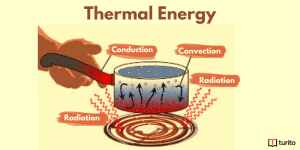The optical density measures how much a material or object lessens the intensity of light passing through it. Light may pass through a medium more slowly the more optical dense it is. The average one of it and area of each fiber are measured.
The process by which light or other electromagnetic radiation passes through matter is called optical density. The wavelength of the radiation, which involves interactions between elementary particles like electrons, atoms, and ions, affects the emission and absorption processes.
Check out some of its features and operations below. But before that, let’s see what is optical density.
What is Optical Density?
When there is very limited light transmission through an optical filter strongly obstructing, (OD) can be used to define the transmission. The slower the wave moves through the material, the higher of it.
One medium is said to be different and the other to be heavier when light refracts through them. The term different and heavier medium is, therefore, comparative. A different medium has a higher speed of light, whereas a heavier medium has a lower speed of light.
Characteristics of Optical Density
We may better comprehend the exhibition of it and how it influences light passing through it by differing the two media.
Think about the factors of glass and air, two various media. The speed of light declines as it departs through the glass from the air. As a result, the light reprobates from its particular path.
- It implies that the optical density of the glass is more incredible than that of the air, which means:
Glass, a heavier medium, has a lower light velocity than a different material (air).
- Suppose the same light infiltrates the glass and penetrates the atmosphere. The speed of light is faster. The light later deviates from its regular path as a result,
The speed of the light in the air (a more uncommon medium) is slower than in glass (a denser medium).
Definition of Optical Density
It is repeatedly contended to be the same as absorption. The percentage of radiation that is endorsed through a matter to radiation that is declining is logarithmic.
There is no scientific unit for it because it is a dimensionless quantity.
Important points to be noted
- Transmittance reduces with rising optical density.
- Transmission loss noted in dB is equal to this density multiplied by ten. For example, a transmission loss of 3dB is related to a density of 0.3.
Optical Density Measurement
The ratio is carried out at the absorbance ranges’ peaks since there is a low likelihood of absorption with a transition in wavelength. Numerous crucial factors, comprising cell concentration, biomass production, and many more, can be quantified using this strategy often.
Absorbance. A= – log(I/I°)
Where, I is the intensity of the light passes through,
I° is the initial light intensity.
Lasers
Optical density relates to a material’s capability to prevent a certain type of light. Despite being assumed by parameters that may be calculated in specific quantities, optical density has no dimensions and no connected scientific unit.
Optical density is still often used. Nevertheless, to predict the level of safety, a person must have to work topic kinds of lasers in occupational health and safety contexts.
What is Optical Density laser Safety?
In the context of laser safety, the fraction of light that is attenuated by the lens at the certain wavelength being measured is known as optical density (OD).
Its laser glasses quantify how much of the light transmitted from a specific wavelength is blocked by the lens of the laser safety glasses.
The more wavelength-specific light is blocked, the higher of it. For instance, laser safety glasses will completely block all but.00001 percent of the laser wavelength at an optical density of 7. Most medical facilities advise using optical density laser safety glasses with an optical density of five or higher when working with medical equipment.
Absorbance
Although both estimations of how much light is immersed as it passes through an optical medium, optical density and absorbance are different.
- The optical density of a substance is a measurement of its capacity to impede or postpone the transmission of light.
- It utilizes a substance primarily affected by the wavelength of the relevant light wave to measure the speed of light.
- The transfer of a wave’s energy to matter during a wave motion is known as absorption.
- If only a small amount of energy is absorbed by the medium, it is said to be clear to that particular radiation; nevertheless, if all of the energy is lost, it is said to be opaque.
- Light is hence more easily absorbed and optically thick material.
Concentration Influence on Optical Density
The concentration can affect, the substance since optical absorption causes it to affect the speed of light.
A substance with a larger it will result in a slower speed of light, which will modify how the light moves.
Light bends because of its decreased speed. The concentration of light caused by optical absorption affects it. The matter’s optical density will rise with higher concentration.
Optical Density Requisition
- It is a quick and accurate measure of suspended biomass content.
- The measurements are commonly used in laboratories like microbiology to monitor germ proliferation in times of optical density.
- It is utilized as a subjective assessment of culture turbidity and a quantitative estimate of the power of light transferred through culture along a particular path length.
- When the chosen wavelength matches chromophore absorption, It can also be used to determine pigment levels within cells.
Light Speed
Refraction is the path of a light wave being bent when it travels through one material and then another. The light wave’s altered speed as it crosses the border is what causes the refraction to happen there.
Whether the light wave accelerates or decelerates when it crosses the border determines whether a beam of light will tend to bend in one direction.
It will be crucial to comprehend the variables that quickly influence a light wave traveling through a medium.
Index of Refraction
The characteristics of the medium affect a light wave’s speed much like any other wave. When an electromagnetic wave is present, the optical density of the material affects the wave’s speed.
A medium’s physical density is different from its optical density. A material’s mass-to-volume ratio is referred to as its physical density.
The optical density of a substance is related to how slowly its atoms tend to hold onto the energy they have absorbed from electromagnetic waves in the form of vibrating electrons before remitting it as a fresh electromagnetic disturbance.
A wave will propagate through a substance more slowly the more optically dense it is.
Transmission
Since optical density and transmittance are inversely related, the larger the optical density, the lower the transmittance.
The decibel loss in transmission equals the ten times loss in optical density. For example, an optical density of 0.5 denotes a 5dB loss in transmission.
It is used to prevent eye damage in the laser business, which employs Class 3b and Class 4 lasers to create the eye. Class 4 lasers have enough power to harm the eyes permanently. Additionally, these lasers may result in skin burns and fire risks. The light’s wavelength influences its eyeglasses. As a result, the eyewear is evaluated according to the amount of light it reflects.
Conclusion
The optical density of an object measures how much light it absorbs and how much light goes through it.It is used in research and engineering to determine the materials that make up an item.
Engineers and scientists can use it to learn more about an object’s qualities, such as the components and properties of the oil, or in the medical profession, look at bacteria and proteins contained in a cell.
Scientists can tell which species, such as bacteria, are developing within the cell based on how much light enters. High bacterial populations alter an object’s optical density, preventing light from flowing through it. More light may get through cells with fewer germs.
Frequently Asked Questions
1. Which two media has higher optical density?
The medium with the highest refractive index has the largest one and vice versa. So, according to that, Diamond and air have the highest and lowest refractive indexes, respectively. As a result, diamond has the highest it, and air has the lowest one.
2. What does optical density depend on?
This is how materials transmit light or other electromagnetic radiation. The emission and absorption processes are affected by the wavelength of the radiation, which involves interactions between fundamental particles such as electrons, atoms, ions, and so on.
3. Does density affect optical density?
The optical density of the material determines the speed of an electromagnetic wave. A material’s mass/volume ratio is referred to as its physical density.

Relevant Articles
Understanding Thermal Energy: What It Is and How It Works
Thermal energy is essential to our daily lives, from warming …
Understanding Thermal Energy: What It Is and How It Works Read More »
Read More >>Avogadro’s Number: Meaning, Importance, and More
Introduction The concept of measuring the microscopic particles that make …
Avogadro’s Number: Meaning, Importance, and More Read More »
Read More >>Kinetic Friction – Definition, Laws, Types
Kinetic Friction Kinetic force is a force acting between two …
Kinetic Friction – Definition, Laws, Types Read More »
Read More >>




















Comments: